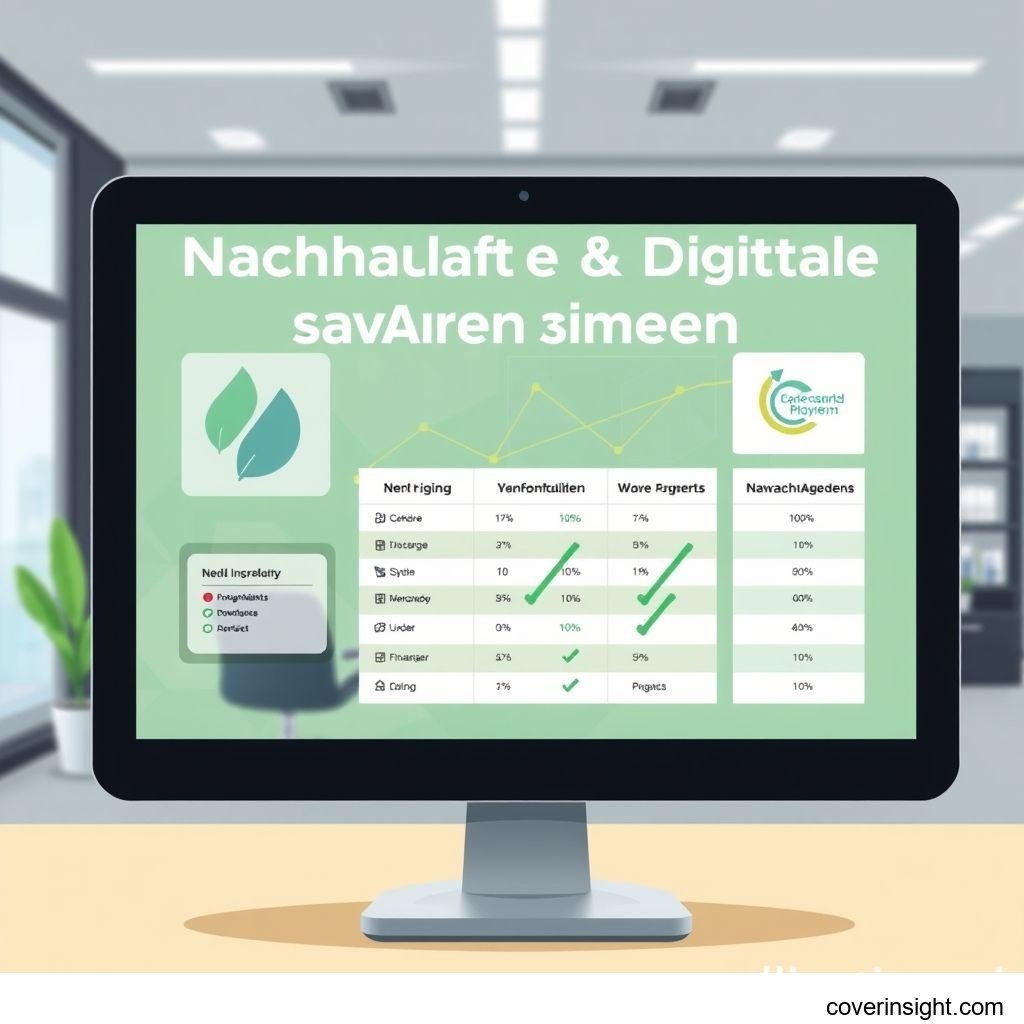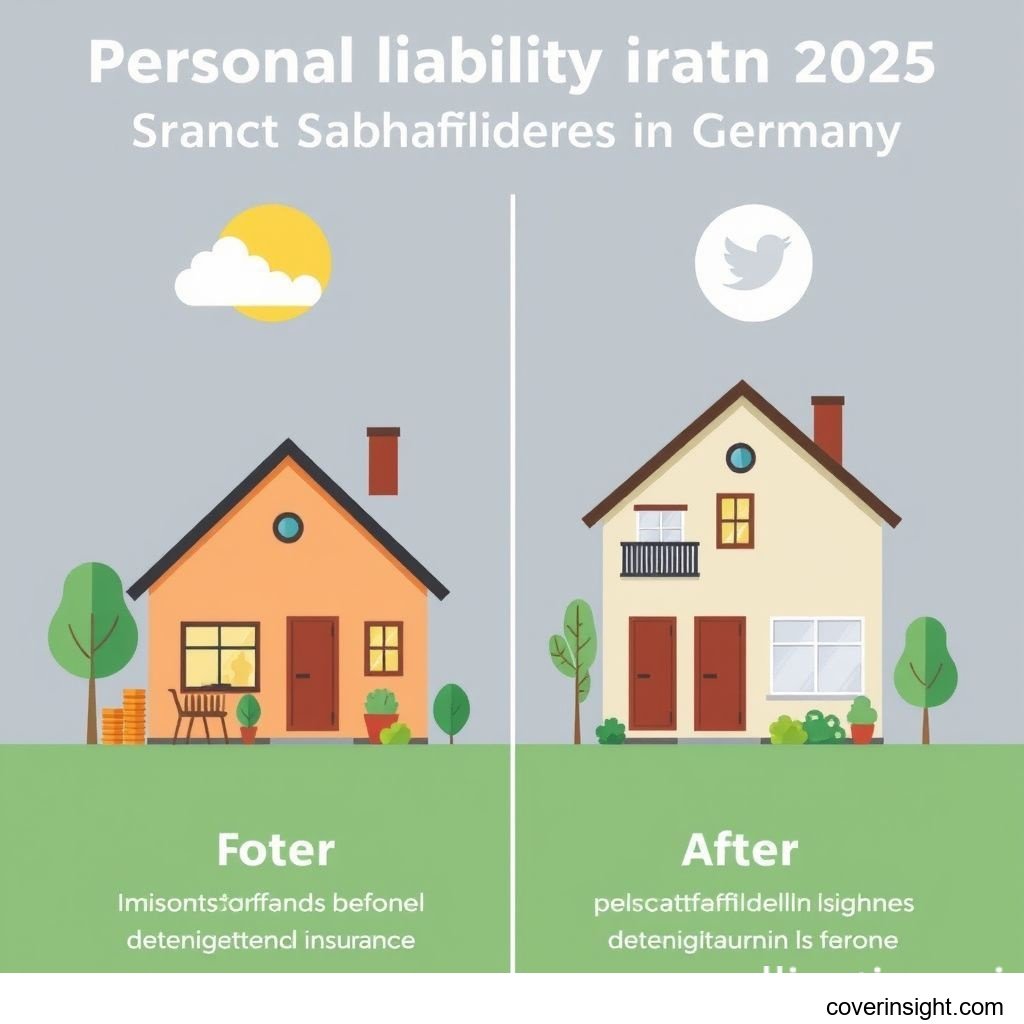Introduction
The German insurance landscape is undergoing a significant transformation, driven by digitalization and a growing emphasis on sustainability. As we look towards 2025, the Digitale Versicherer Vergleich by Stiftung Warentest promises to be an indispensable guide for consumers navigating this evolving market. This comparison will highlight not only the efficiency and accessibility of digital insurance providers but also their commitment to ecological and social responsibility. Understanding the nuances of these digital, sustainable offerings is crucial for consumers seeking convenient, transparent, and ethically aligned insurance solutions in Germany. The rise of such insurers reflects a broader trend where convenience meets conscience, prompting many to re-evaluate their traditional insurance relationships.
Coverage Details
What’s Included
Digital and sustainable insurers in Germany typically offer a comprehensive range of policies, often tailored for online accessibility and with an eye towards environmental and social governance (ESG) criteria. You'll find standard offerings like Haftpflichtversicherung (personal liability), Hausratversicherung (household contents), and Kfz-Versicherung (car insurance), often with user-friendly online tools for immediate quotes and policy management. The "sustainable" aspect often manifests in a few key ways: insurers might invest premiums in green funds, use entirely paperless processes, offer discounts for eco-friendly behaviors (e.g., driving an electric car), or contribute to social projects. For example, some providers are transparent about their investment portfolios, ensuring they align with UN Sustainable Development Goals. These aspects are what Stiftung Warentest aims to scrutinize, delving deeper than just the price. For a broader understanding of global insurance trends, consider exploring various [Insurance Resources Global].
Common Exclusions
While digital insurers strive for transparency, it’s essential to be aware of common exclusions, much like with traditional policies. These typically include damages caused by gross negligence (though some digital tariffs offer an add-on for this), acts of war or civil unrest, and undeclared pre-existing conditions in health or pet insurance. Additionally, specific high-risk activities not explicitly covered or highly valuable items not properly declared might also fall under exclusions. Digital platforms often make it easier to find and understand these exclusions within their terms and conditions, rather than poring over lengthy paper documents. It’s always prudent to read the fine print, even if it's digital.
Cost Analysis
Price Factors
The premiums for digital and sustainable insurance policies in Germany are influenced by several factors, mirroring those of traditional insurers but often with a digital twist. Your geographic location (Postleitzahl), age, the type and level of coverage chosen, and the deductible (Selbstbeteiligung) you opt for all play a significant role. For sustainable policies, unique factors might also come into play; for instance, owning an electric vehicle could lead to lower Kfz-Versicherung premiums, or having an energy-efficient home might reduce Hausrat insurance costs. The ease of online comparison tools allows for quick adjustments to these factors to see their immediate impact on price.
Saving Tips
When it comes to saving on digital and sustainable insurance, a bit of strategic thinking goes a long way. Firstly, thoroughly utilizing comparison platforms like the upcoming Stiftung Warentest 2025 report is paramount to "auf Herz und Nieren prüfen" (scrutinize thoroughly) the various offers. Secondly, consider bundling multiple policies with the same provider; many digital insurers offer attractive discounts for combining, say, your personal liability and household contents insurance. Opting for a higher deductible can lower your monthly premiums, provided you are comfortable bearing more of the initial cost in case of a claim. Maintaining a good claims history also tends to be rewarded with lower rates over time. And remember, "Kleinvieh macht auch Mist" (every little bit helps) – even small discounts can add up over the year. For more specific local information, visit [DE Insurance Home].
FAQs
How much does Digitale Versicherer Vergleich cost?
The Digitale Versicherer Vergleich by Stiftung Warentest itself is usually published as part of their magazine or online content, which may require a purchase or subscription. The act of comparing digital insurers through their online portals is generally free of charge.
What affects premiums?
Premiums are primarily affected by the type and scope of coverage, the policyholder's risk profile (e.g., age, location, claims history), the chosen deductible, and specific features of the insured item (e.g., car model, home security features). For sustainable policies, eco-friendly choices can also influence the price.
Is it mandatory?
While many digital insurance policies like Haftpflicht (personal liability) are not legally mandatory in Germany, they are highly recommended as they protect against potentially ruinous financial claims. Kfz-Haftpflichtversicherung (motor vehicle liability insurance) is legally mandatory for all vehicle owners.
How to choose?
Choosing the right digital insurer involves comparing coverage details, exclusions, price, customer service quality, and importantly, the insurer's sustainability credentials. Stiftung Warentest's comparison will offer valuable insights into these aspects. It's also wise to check independent reviews and the insurer's financial stability, overseen by bodies like [BaFin - Federal Financial Supervisory Authority].
Consequences of no coverage?
The consequences of no coverage can be severe. Without liability insurance, you are personally liable for damages you cause, which can lead to substantial financial burdens. For mandatory car insurance, driving without it can result in heavy fines, points on your license, or even imprisonment.
As someone living in DE and observing the market, it's fascinating to see how swiftly the German insurance landscape is evolving, driven by consumer demand for both convenience and ethical responsibility. The shift towards digital, sustainable insurers isn't just a trend; it's a reflection of changing societal values. Based on my experience, the German consumer is increasingly discerning, not just looking for the cheapest option but also for providers who align with their personal values, particularly concerning environmental impact. For instance, recent data from the German Insurance Association ([GDV - German Insurance Association]) indicates a steady increase in online policy sales, coupled with a rising demand for transparent reporting on sustainability efforts from insurers. This makes the upcoming Stiftung Warentest analysis particularly timely and relevant. Consider the case of a Berlin resident choosing a new Hausratversicherung: they might not only compare prices but also actively seek out providers that publicly declare their commitment to carbon neutrality or ethical investments, often transparently displayed on the insurer's website or app. This move towards value-driven choices signals a mature market ready for responsible innovation.
Further reading: Insurance Resources Global
Further reading: DE Insurance Home










Comments